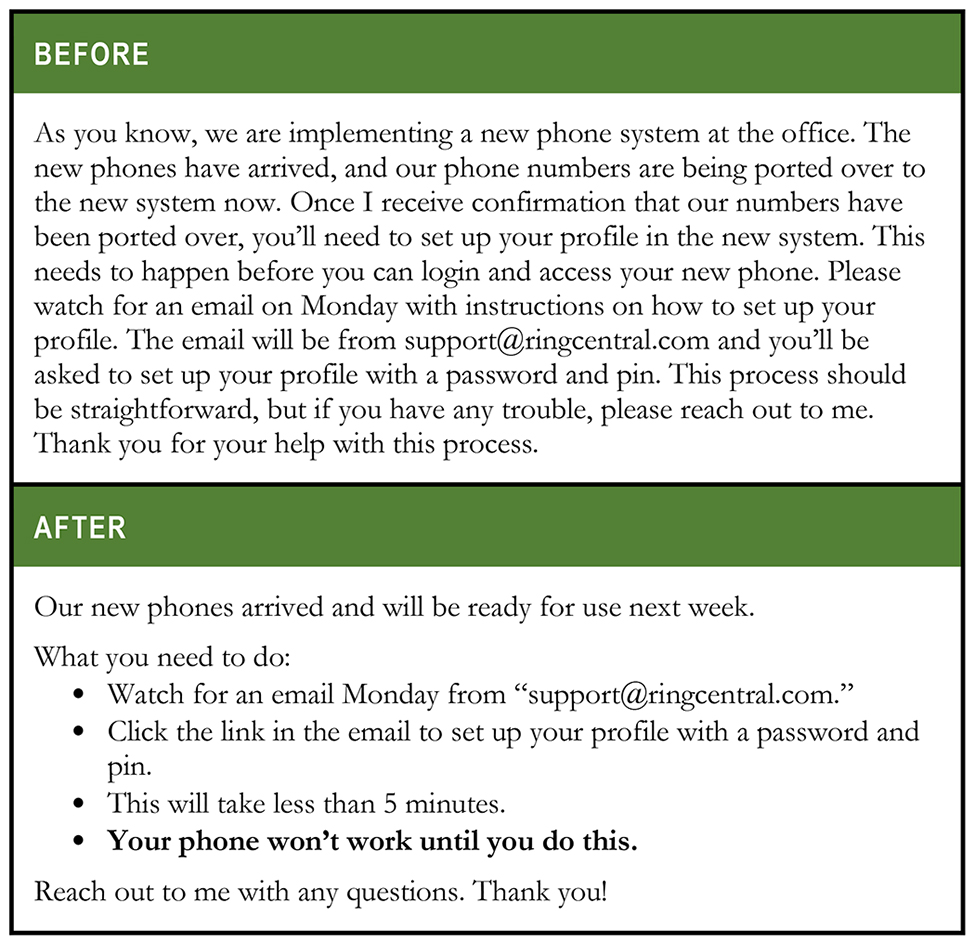What We're Reading Now
Clarity From Brevity
10 October 2023
Janie read Smart Brevity: The Power of Saying More with Less by Jim VandeHei, Mike Allen, and Roy Schwartz, and was thrilled to find a book with practical tips to sharpen your message with fewer words.
Tags: communication, janie read
A few months ago, Rachel recommended I read Smart Brevity: The Power of Saying More with Less by Jim VandeHei, Mike Allen, and Roy Schwartz, journalists who understand the importance of getting their readers’ attention. This is a fantastic book, especially if you’re like me and use too many words.
One Takeaway. Your first sentence is your chance to tell the reader what they need to know (and convince them not to stop reading). Think about who you’re writing for and ask yourself, “If they were headed out the door — what is the one thing you’d shout and hope they didn’t forget? That’s your opening sentence.” To do this, “picture in your head the person you’re trying to reach…if you’re targeting a group, zero in on a specific individual, a name, a face, a job. Always do this before you start communicating. If you try to speak to everyone, usually you reach no one.”
Great Examples. You might be thinking, “that sounds great, but how do I do it?” Each chapter includes samples of writing with before and after examples. The authors advise keeping things simple and short, and remind that “short does not mean shallow.” You’re not diluting your message by shortening it; you’re making it stronger.
Application. Since I finished the book, I’ve been trying to incorporate what I learned. I’ve been coordinating our office shift to a new phone system. Now it’s time to communicate the next steps to our team. My focus is on being clear and direct. I want my team to know what is happening and what they need to do.
Below are two versions of the same message, with the “after” using the Smart Brevity approach.

My first draft was a long, wordy paragraph with additional context about the process that no one needs to know. The second draft is shorter and uses bullets to convey critical information. I removed details that weren’t helpful, and provided more direction about what needs to happen and how long it will take.
It’s much easier to review quickly and understand the next steps. I want to be clear that the phone won’t work if this step isn’t completed, so I bolded the last bullet to get their attention. If anyone on my team has questions or wants more detail, they will ask, but nothing I took out of my first draft is relevant to the action I need them to take.
This is one of the most useful books I’ve read, and I highly recommend it. If you read the book and would like to discuss, reach out to me! I’d love to have someone to practice with.







Comments
Our Comment Policy:
Our blog posts are only half of the conversation. What our readers have to say is equally important to us, and we're grateful for all the comments that continue the dialog.
To ensure that the discussion here is as useful as possible to all of our readers, please be respectful of our contributors and refrain from harassing, threatening and/or vulgar language. We reserve the right to screen and remove any comments from the site. If you have a question about a comment or want to discuss our policy, please contact us. We'll talk it over.
Sarah
Oct 10, 2023
Thanks for the post. I just ordered the book on Amazon. I am constantly self-editing to bullet points to make it easier for my audience to read. (Pass/Fail)
I saw 2 great take-aways from the start:
‘Know the Audience’ and
‘Short Not Shallow’.
Thanks for the blog and the recommendation. Can’t wait to dive in.
Janie
Oct 11, 2023
So glad you enjoyed the post, Sarah! Thank you for commenting and I look forward to hearing what you think of the book.